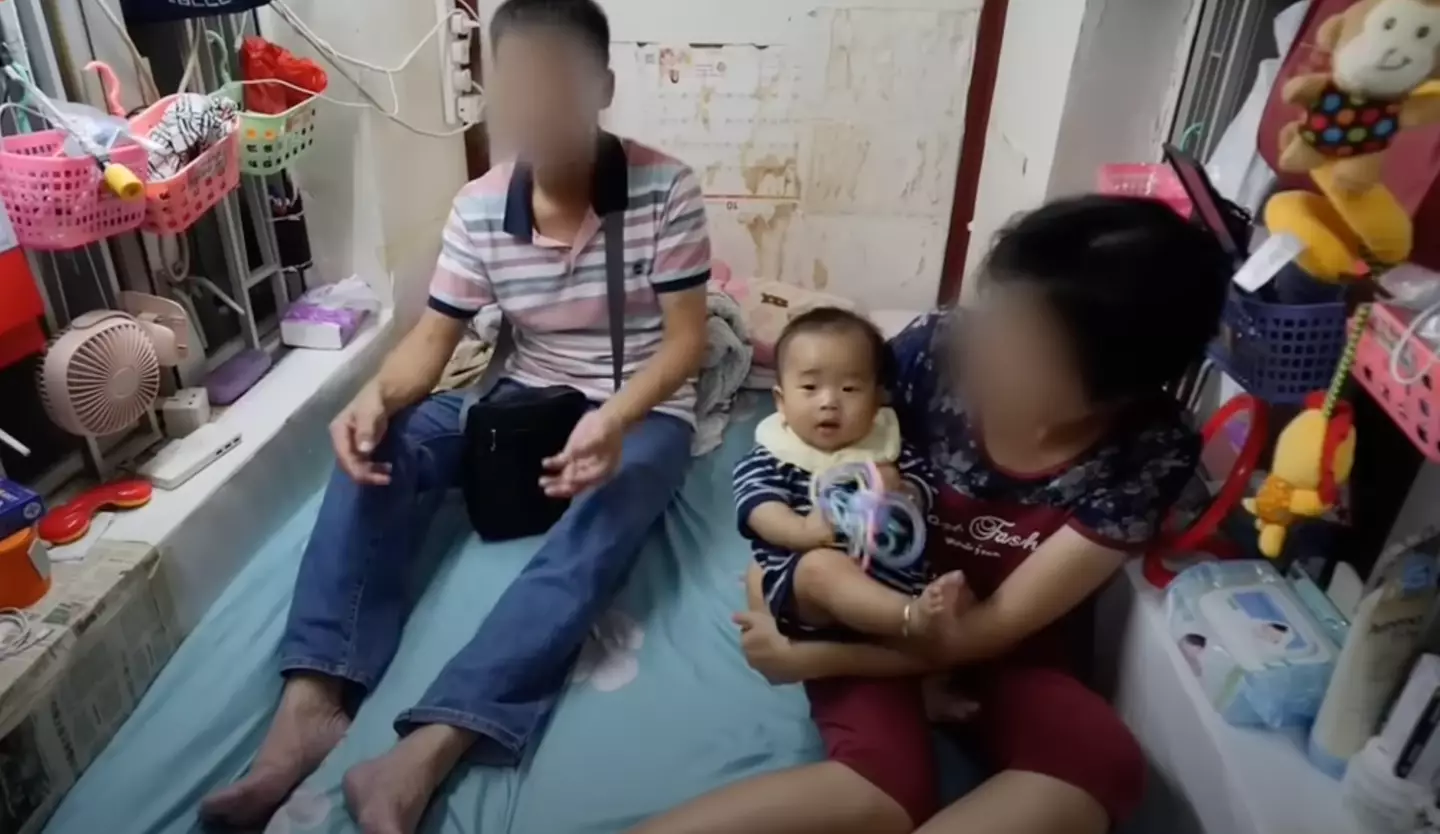
The Hong Kong housing crisis is forcing residents to live in tiny properties with limited floor space and share bathrooms with up to 20 people.
Miniscule cubicles known as ‘coffin homes’ and ‘coffin cubicles’ are scattered around Hong Kong’s older districts, such as Mong Kok and Tai Kok Tsui.
These spaces are categorized as ‘bedspace apartments’ by the Hong Kong government and first became popular in the 1950s.
At the time of their creation, migrant workers would often check themselves into these small rooms temporarily.
Advert
However, 70 years later, they’re still popular due to the institution of the single-person scoring system when it comes to public housing applications.
Moreover, people moving to Hong Kong must wait seven years to become permanent residents and thus are sometimes forced to live in these spaces until their application for an ID card can be approved.

A typical coffin home is around 15-18 square feet, is contained to just a single room and can cost up to US$300 to live in per month.
In these coffin rooms, there are usually only a couple of shelves where you can balance clothes, books and other belongings while washing and toilet facilities are shared with others.

Back in 2017, Guardian journalist Benjamin Haas elected to spend a week inside a 12 sq foot coffin home which had no window.
During his stint, he spoke to a resident who said: “This isn’t my real home, my home is the apartment I shared with my wife and daughter.
“But this place is cleaner than most coffin homes, and everyone is very friendly.”
According to government data, 200,000 people were living inside these coffin homes in 2020 despite the rooms lacking privacy and being a breeding ground for disease and viruses.
In an interview with Sky News in 2019, one coffin home resident said: “No-one cares about us. We are just forgotten.”
In 2022, popular TikToker TheFeedSki made a video about coffin cubicles which saw thousands flocking to the comments section to have their say.
One social media user wrote: “Sorry God if sometimes I’m not grateful for my life. Thank u for everything.”
A second said: “Now do luxury mansions in Hong Kong where some of the richest billionaires in the world bought.”
Another typed: “Better than on the street.”
“Man they are so futuristic there,” complained a fourth. “Light years ahead of us in North America.”
Another TikTok user said: “Living in my little middle-of-nowhere town in the mountains just seems better everyday, my closest neighbors are about 100 yds away.”
